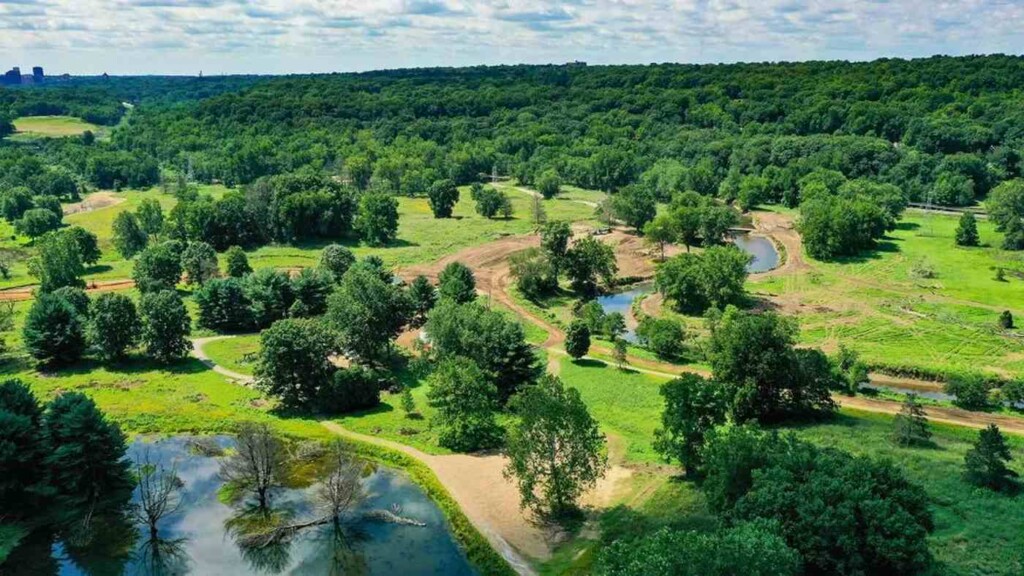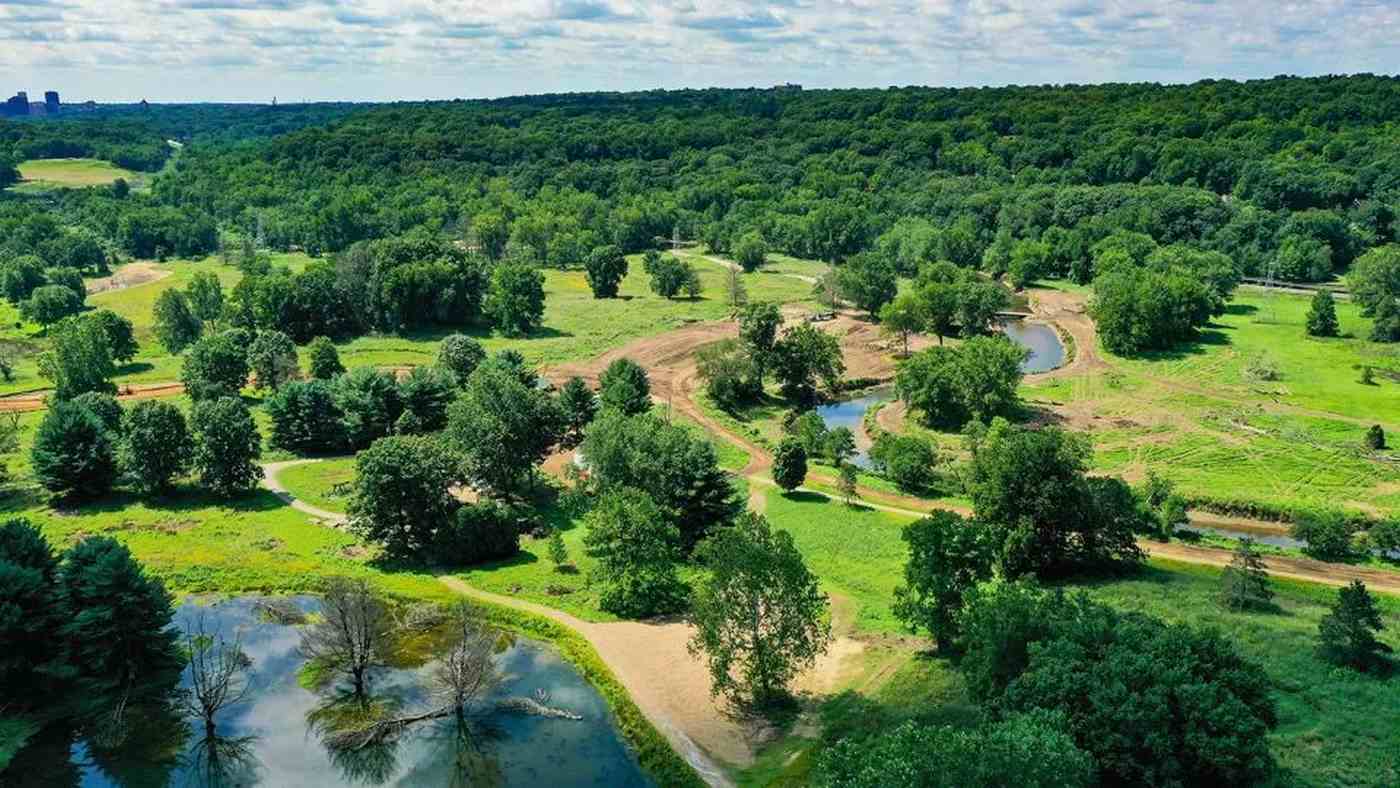
Near Akron, Ohio, an abandoned golf course has been rewilded into a splendid slice of natural Rustbelt nature that includes a restored section of the now nationally protected Cuyahoga River.
Golf courses around the country are being closed faster than they’re being opened, and the vast acreage of the fairway is often reclaimed by nature, but not always by native vegetation.
With vast tracks of non-native grass that’s heavily watered, mowed, and sprayed with pesticides covering gradient changes that may not necessarily be conducive to the growth of native species, they can easily become prey for invasive colonizer species.
That’s why Summit Metro Parks, when they acquired the Valley View Golf Course, knew they had to take an active role in returning the fairway to how it looked before settlers arrived.
“We had to undo the golf course before we could restore the landscape,” said Mike Johnson, chief of conservation at the Summit Metro Parks. “Golf courses are harsh environments, and to create them the vegetation used is usually non-native… It doesn’t have value for our local fish and wildlife.”
However big the job was, it offered the non-profit a tremendous opportunity to connect two of its existing properties into a single, 1,900-acre haven for fish, birds, and native plants.
Before the golf course, the river section had been channelized, and so earth-moving equipment had to be brought in to widen and bend the river back into its pre-industrialized, meandering course.
OHIO REWILDING STORIES: Acres of Toxic Chemicals and Rusting Cars Becomes National Park After Amazing Transformation
It being the Cuyahoga River, famous for catching on fire several times during the 20th century due to pollution, its status now as a naturally-flowing river that floods the surrounding wetlands during periods of intense rain, and already harboring near-perfect conditions for biodiversity is an inspiring site to native Ohioans.
“The response from wildlife has been huge,” Johnson told CNN. “Prior to our work, we documented about 200 species of plant and wildlife that were living on the golf course at the time we acquired it. Today we have documented over 900 species of fish and wildlife that have returned to this area.”
MORE OHIO PARKS: Little Known Ancient Site in Ohio Crowned by UNESCO–for Incredible Alignment with Moon and Sun
The golf course has now been attached via hiking and biking trails to the Cascades Valley Park, also owned and managed by Summit Metro. Located in the valley’s pre-glacial bedrock canyon, Cascades Valley contains a canopy of oak, American beech, sassafras, black cherry, and the endangered butternut tree.
WATCH the story below from CNN…
SHARE This Perfect Rewilding Story With Your Friends From Ohio…





















So important to realize that we now have so very many invasives that letting any area go “back to nature” is a failure unless it is truly purposed as in this article. Non-native species are invasive because virtually nothing native can subside on them. Tree-of-Heaven (Ailanthus) provides no food; not a single insect except non-native ones can subsist on them. Non-native Lanternflies love them tho, and breed without competition. Nothing eats them but the occasional non-native Asian preying mantis – itself an invasive, wiping out our smaller native mantises as well as our native wasps and bees. I won’t even go into the Callery (Bradford) Pear- a tree so destructive that hundreds of thousands of acres of natives have been eliminated by it and several states have banned its sale.